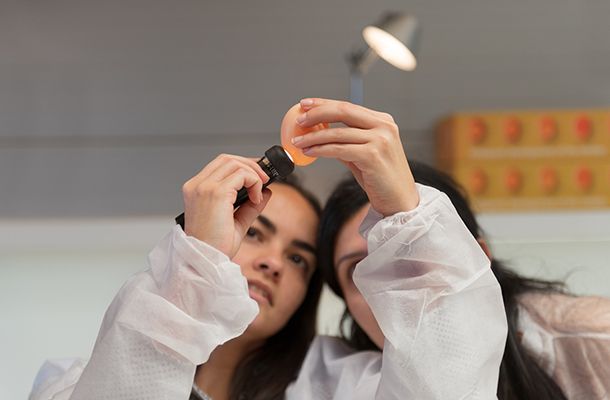Nail polish is not the solution
Tags: Egg handling | Blog
, 21 March 2023

In hot and humid countries, achieving sufficient egg weight loss during incubation can be a challenge, and even more so if there is no air handling unit with the option to dehumidify the incoming air. I was therefore very surprised to be confronted with a situation in a hatchery in southeast Asia where the relative humidity set points in the incubation programme had been increased because the egg weight loss was too high. Indeed, looking into the historical egg weighing data before setting and after transfer, weight loss was often more than 13% and even up to 15%. After adjusting the set points, the egg weight loss was reduced to a more normal 11–13%.
At the time of my visit, a hatch was going on so I took the opportunity to put a few hatcher baskets aside for a breakout of unhatched eggs. It seemed to me that this number was higher than it should be, especially when taking into account the fact that the eggs were candled at transfer. In just the third egg, I found a greenish powdery cover on the air cell membrane … Aspergillus! And it was not just this egg … in every hatcher basket I found a few. How had this nasty fungus found its way into so many eggs? The answer was quickly found. In the egg storage room, we turned off the light and used a candling lamp to inspect the eggs, and found a lot of hair-cracked eggs, which would also explain the high weight loss. Looking at the plastic 30-egg flats, the locations of the cracks matched exactly with their sharp edges. Combined with the stacking height and poor road conditions, quite a few eggs had failed to survive the short trip between the breeder farm and the hatchery.
This is when I remembered a hatchery management training course a year earlier in Indonesia, where an enthusiastic participant had shared his solution to hairline cracks … nail polish! Of course, repairing the cracks with nail polish would have helped to prevent the eggs from losing too much weight, but it would have been too late to keep the Aspergillus out.
The breeder farm manager was called in and together with the hatchery manager the egg handling from nest to hatchery was discussed, so that they could work on the root cause of the high egg weight loss and Aspergillus contamination: minimizing the incidence of hairline cracks. I left them at it, and felt confident that the nail polish would not be needed.
Written by Gerd de Lange
Senior Poultry Specialist
I welcome your feedback on this article - and if you require any additional information, please don't hesitate to contact me.